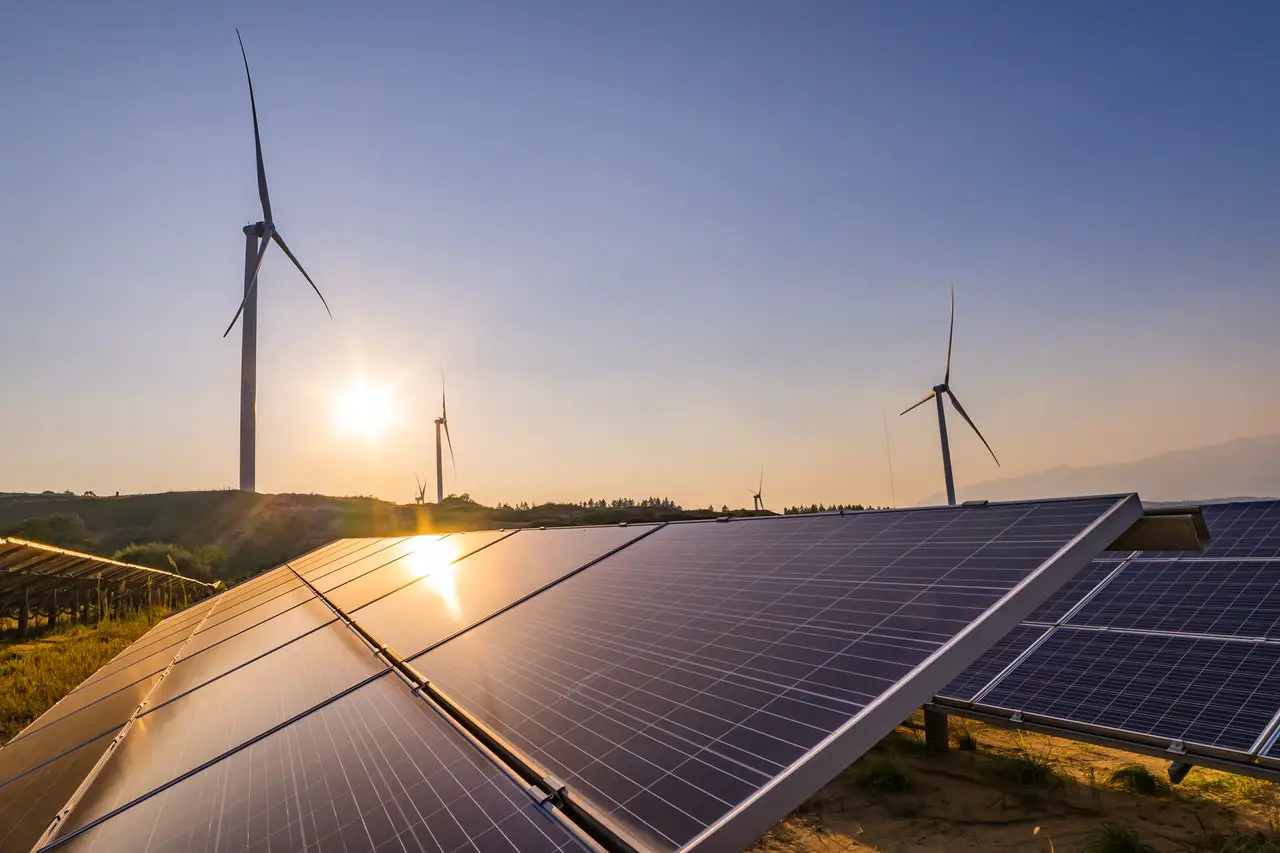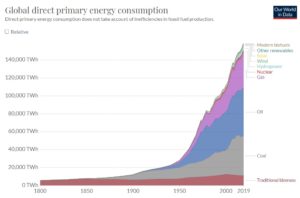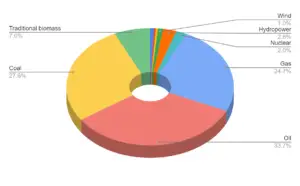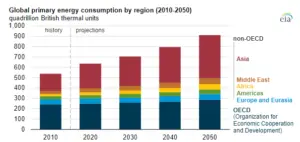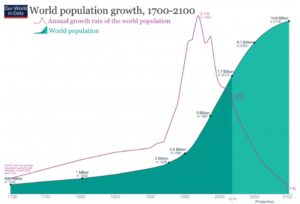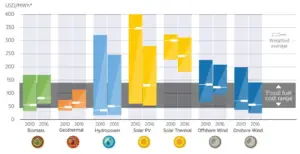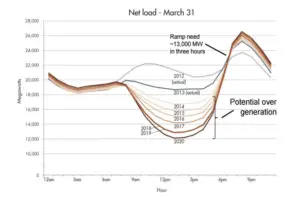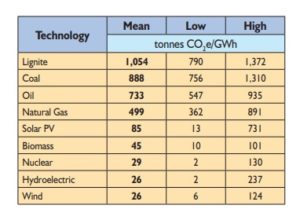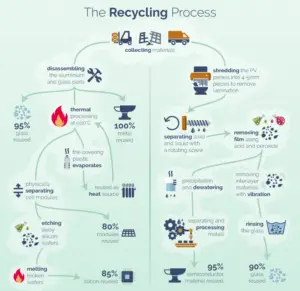We all acknowledge the existence of global warming and the devastating consequences it has had on our planet. Not only has global warming destroyed ecosystems and habitats but it also resulted in an increase in the average temperature worldwide. While some people advocate for the use of renewables to combat global warming, the truth is that there are countless renewable energy disadvantages that make it impossible for it to power the whole world.
An increased number of extreme weather events, with increased intensity, have been felt across the globe. With the ice caps melting and the rise of sea levels, we are witnessing a complete transformation of the planet. These changes might not be reversible. As a result of the problem we face, we try to look for solutions. But the reality is renewable energy is not yet the key to fixing our global warming nightmare.
Understanding Energy Consumption
We have been fooled to believe that our planet can be powered solely by renewable energy, which is not true. Despite the attempts of many politicians, usually left inclined in Europe and the US, to promote renewable energy as the ultimate solution for all of mankind.
To put it short, it is not possible to power the entire planet with renewable energy, because of the countless renewable energy disadvantages. It would require a lot of shot term changes and from an operating point of view, it would not be functional.
Let’s look at the energy consumption worldwide by source, so we can understand the problem we are facing.
Source: Ourworldindata
When we consider the percentage of energy that is produced by renewable energy, it accounts for only 12.1% of all the energy consumed in the world in 2019.
The staggering discrepancy of energy produced between renewable and non-renewable energy sources leaves us to believe there is still a big amount of work in front of us to be able to rely on renewables.
Let’s break down all the percentages of each individual energy source.
Source: Author
All things considered, renewable energy still remains vastly unused. Given the trend of growing population coupled with the growing need to produce even more energy.
Energy consumption expected to increase
Thinking of a world only powered by renewable energy sources is something that will take a lot of effort and investment, and might not pay off as we will see. EIA, the US Energy Information Administration is projecting a 50% increase in energy consumption worldwide, mostly led by increased energy usage in Asia.
Source: EIA
The main driver behind EIA’s estimates of increased energy consumption is easily explained by the expected growth in the global population. Projections show that by 2050, we will reach 9.7 billion inhabitants on the planet, from the 7.7 billion we are today.
Source: Ourworldindata
Since energy consumption is expected to rise by over 50% in the next 30 years driven by the growing global population. It seems a herculean task for renewables to become the main energy source powering the planet. As they only represent a small fraction of energy produced worldwide.
Cost per energy source
Another aspect that we also have to consider is the cost per energy source. This is extremely important since some underdeveloped countries will obviously prefer cheaper energy sources.
Despite the technological advances we have achieved in renewable energy, they still remain expensive, when compared with fossil fuels.
Given the increased cost of renewable energy and taking into account that we as a planet are completely indebted, it remains very unlikely that renewables will soon become the main energy source of the planet.
Our resources are finite, and the honest truth is that people care too little about where their electricity comes from. There is no differentiating factor when using electricity powered by coal, wind, solar, or oil. The end result is the same, the light turns on when you press the button independently of the energy source.
Combine the fact that renewable energy sources are by far a much more expensive option than fossil fuels, with the amount of debt around the world, it seems unlikely for undeveloped countries to start using renewables on a large scale.
We can see how it will be an easy choice for some countries to generate power out of fossil fuels. The pandemic has not been favorable for global debt. Global debt is expected to reach a record of $277 trillion by the end of 2020. This equates to 365% of the global GDP.
Renewable energy is unreliable
But the challenges that renewable energy faces don't end up here. The fact is that fossil fuels have been used to generate power over the years for a number of reasons. The main one is reliability.
The ability to press a switch and turn on a light is taken for granted in a sense. For the light to turn energy needs to have been produced, and renewable energy simply does not work when we want them to.
At any given moment power supply and demand must be in balance. Consider a windless and cloudy day. Wind turbines and solar panels will not be able to generate the necessary electricity on those specific days.
Also, the battery technology is not as advanced, and we don’t have the possibility of storing all the produced energy. Despite being expected to grow, energy storage will only achieve 1000GW by 2040, requiring an investment of $662 billion. Frankly, this is not nearly enough to be able to power the whole world with renewable energy.
Understanding The Duck Curve
Another aspect is the fact that power demand and supply must be in balance. Solar and wind are simply not reliable for that reason. Solar presents even more problems, as there is a disparity between the peak demand and peak supply.
This is usually referred to as the “Duck Curve”. The name comes from the resemblance to a duck shape of the graphic depicting the energy consumption during the day.
Source: Nuclear Power
It is explained by the fact that most of the energy consumed is after sunset. For that reason, we cannot fully rely on solar panels to generate all the electricity that we need.
Without adequate batteries for energy storage, we won't be able to fix the problem. When the sun sets fossil fuels are required to balance power supply with power demand. This in turn generates another problem.
Coal or nuclear plants are designed to run at full capacity, in order to be economically viable. By using the energy produced by solar panels coupled with coal and nuclear plants running under capacity, we will have higher energy costs.
The only solution for this problem lies in a very advanced battery system that allows us to store most of the energy we produce. Despite great advancements in battery technology, it is still out of reach.
Renewable Energy Pollution
All things considered, renewables remain a challenge to become a reliant and favored source of energy. Not only that but the general public perception is that renewables have near CO2 emissions, which is not entirely true. Every energy source inevitably releases CO2 into our atmosphere.
Source: World Nuclear
But the surprise in this data is the fact that solar panels are very misunderstood by most people. If we look closely at solar panels, how they are built, their life cycle, and the materials used to build them, we can easily understand that in the end, they produce more CO2 than nuclear energy.
Why Nuclear energy is the solution
Most people when they hear the word nuclear have reminiscences of Chornobyl, Fukushima, and Three Mile Island. It is undeniable that nuclear power can turn against us and decimate entire populations and habitats.
But at the same time, it is a reliable, clean, and sustainable source of energy. After all nuclear energy is a zero-emission energy source.
Another factor is that nuclear energy’s footprint is fairly small compared with renewables. A 1,000-megawatt nuclear facility will require nearly 1 square mile of land to operate. On the other hand, wind farms will require nearly 360,000 square miles to produce the same amount of energy.
If we look at solar it would still take up 75,000 square miles. One other aspect is the minimal waste produced by nuclear plants. Not only that but new ways of recycling nuclear waste have been lately developed with the intention of minimizing waste.
Conclusion
As we can see there are many challenges that we face in order to become carbon neutral. Powering an entire planet is not an easy task, and it requires reliable sources of energy. Despite the technological advancements most of the renewable energy disadvantages still have not been overcome.
We still have a long way to go in order to achieve our goals. Unless energy storage technology takes a big leap forward, these problems will continue to affect our goals. It is undeniable that nuclear energy can serve as an important energy source during the transition to carbon neutrality. Until we find a solution to renewable energy’s problems, nuclear seems to be the most reliable and environment-friendly option.
Most solar panel manufacturers stand by their claim, that a solar panel will last an average of 25 years. After that, the toxic trash pile it will leave behind is difficult to recycle and questions the whole green initiative behind solar energy itself. The process to recycle an entire solar panel is not easy to achieve, and has gotten many people wondering “If Solar Panels Are So Clean, Why Do They Produce So Much Toxic Waste?
Source: Greenmatch
Why Nuclear energy is the solution
Most people when they hear the word nuclear have reminiscences of Chornobyl, Fukushima, and Three Mile Island. It is undeniable that nuclear power can turn against us and decimate entire populations and habitats.
But at the same time, it is a reliable, clean, and sustainable source of energy. After all nuclear energy is a zero-emission energy source.
Another factor is that nuclear energy’s footprint is fairly small compared with renewables. A 1,000-megawatt nuclear facility will require nearly 1 square mile of land to operate. On the other hand, wind farms will require nearly 360,000 square miles to produce the same amount of energy.
If we look at solar it would still take up 75,000 square miles. One other aspect is the minimal waste produced by nuclear plants. Not only that but new ways of recycling nuclear waste have been lately developed with the intention of minimizing waste.
Conclusion
As we can see there are many challenges that we face in order to become carbon neutral. Powering an entire planet is not an easy task, and it requires reliable sources of energy. Despite the technological advancements most of the renewable energy disadvantages still have not been overcome.
We still have a long way to go in order to achieve our goals. Unless energy storage technology takes a big leap forward, these problems will continue to affect our goals. It is undeniable that nuclear energy can serve as an important energy source during the transition to carbon neutrality. Until we find a solution to renewable energy’s problems, nuclear seems to be the most reliable and environment-friendly option.
HERE is why uranium prices will surge
Featured image source: IEA

